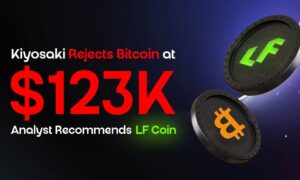Introduction
The digital landscape is constantly evolving, and one of the most exciting developments in recent years has been the rise of Web 3. Web3, short for Web 3.0, represents a paradigm shift in the way we interact with the internet. It’s a decentralized and user-centric vision of the web that promises to give users greater control over their data and online experiences. To make this vision a reality, various blockchain and cryptocurrency projects are playing a crucial role. In this article, we’ll explore the coins that support Web3 and how they are driving the transformation of the internet.
Coins That Support Web3
1. Ethereum (ETH)
Ethereum, the second-largest cryptocurrency by market capitalization, is often considered the cornerstone of the Web3 movement. It was created by Vitalik Buterin in 2015 and has since become the platform of choice for decentralized applications (DApps) and smart contracts. Ethereum’s blockchain technology enables developers to build decentralized, trustless applications, which are a key component of the Web3 ecosystem.
Ethereum’s native cryptocurrency, Ether (ETH), is used for transaction fees and as a store of value. ETH is crucial for powering DApps and ensuring the security of the network through its proof-of-stake consensus mechanism. As Web3 continues to grow, Ethereum remains at the forefront, with its upgrades, such as Ethereum 2.0, aimed at improving scalability and energy efficiency.
2. Polkadot (DOT)
Polkadot is a multi-chain network that connects different blockchains and enables them to interact and share information. Developed by Dr. Gavin Wood, one of Ethereum’s co-founders, Polkadot aims to address the issue of blockchain interoperability, a fundamental requirement for Web 3. Its native cryptocurrency, DOT, plays a central role in the governance and security of the network.
Polkadot’s unique architecture allows for the creation of parachains, specialized blockchains that can be customized to meet the specific needs of different applications. This adaptability makes Polkadot a crucial player in the Web3 ecosystem by providing a platform for a wide range of DApps, services, and protocols to coexist and collaborate.
3. Filecoin (FIL)
In the Web3 world, decentralized storage is a vital component. Filecoin is a cryptocurrency and network designed to address the need for decentralized and censorship-resistant storage solutions. The Filecoin network enables users to rent out their excess storage space and earn FIL tokens in return. At the same time, those seeking storage can pay with FIL to access the decentralized storage network.
Filecoin’s innovative approach to storage addresses some of the major concerns with centralized data storage, such as security and privacy issues. This project plays a critical role in ensuring that Web3 can deliver on its promise of a more user-centric and secure internet.
4. Chainlink (LINK)
Chainlink is another Web3 cryptocurrency that’s helping to bridge the gap between blockchain and real-world data. Chainlink provides decentralized oracles, which are data feeds that connect smart contracts with real-world information, making DApps more versatile and useful. LINK is the native cryptocurrency used to incentivize node operators on the Chainlink network.
Web3 applications often require access to external data sources, and Chainlink’s decentralized oracles enable them to do so in a secure and reliable manner. This helps ensure that Web3 applications can interact with the broader world and provide users with valuable and up-to-date information.
5. Tezos (XTZ)
Tezos is a blockchain platform known for its on-chain governance and self-amendment capabilities. It allows token holders to propose and vote on changes to the network’s rules and protocols. Tezos aims to be a self-evolving blockchain, which aligns with the dynamic and user-centric nature of Web 3.
XTZ is the native cryptocurrency of the Tezos platform, used for both transaction fees and staking. By enabling self-amendment and on-chain governance, Tezos provides a robust foundation for the Web3 ecosystem, allowing it to adapt to changing needs and requirements without contentious hard forks.
6. Solana (SOL)
Solana is a high-performance blockchain that has gained significant attention in the Web3 space due to its fast transaction speeds and scalability. It offers a powerful platform for decentralized applications and DeFi projects. The SOL token is the native cryptocurrency used for staking and as a means of exchange within the Solana ecosystem.
The rapid transaction speeds and low fees of Solana make it an attractive option for developers looking to build Web3 applications that require high throughput. As Web3 continues to expand, Solana’s scalability features become increasingly important.
7. Cardano (ADA)
Cardano is a blockchain platform known for its research-driven approach to development and a focus on sustainability and scalability. ADA, the native cryptocurrency of Cardano, is used for transactions and staking. Cardano’s unique features, including the Ouroboros consensus algorithm and the ability to develop smart contracts in multiple programming languages, make it a promising player in the Web3 ecosystem.
Cardano’s commitment to research and scientific rigor sets it apart in the Web3 landscape, as it aims to create a secure and sustainable platform for decentralized applications and services.
8. Avalanche (AVAX)
Avalanche is a highly scalable blockchain platform that offers fast and customizable blockchains, making it suitable for a wide range of applications. AVAX is the native cryptocurrency used for securing the network, paying for transaction fees, and participating in governance decisions.
Avalanche’s architecture allows for the creation of custom blockchains, making it adaptable to the diverse needs of Web3 projects. Its subnets, where developers can build and customize their own blockchains, support the creation of a robust Web3 ecosystem.
8. Algorand (ALGO)
Algorand is a blockchain platform that focuses on scalability, speed, and security. It employs the pure proof-of-stake consensus mechanism to provide high throughput and quick transaction finality. ALGO is the native cryptocurrency of Algorand, used for transaction fees, staking, and governance.
Algorand’s approach to consensus and its smart contract capabilities make it a strong contender in the Web3 space, offering the performance and security required for a wide range of applications.
9. Flow (FLOW)
Flow is a blockchain platform designed specifically for NFTs (non-fungible tokens) and gaming applications. FLOW, its native cryptocurrency, is used for transaction fees and as a means of exchange within the Flow ecosystem. Flow’s focus on NFTs and gaming aligns with the growing interest in these sectors within the Web3 community.
Flow’s architecture and tools make it easier for developers to create NFT-based applications and experiences, which are becoming increasingly popular in the Web3 ecosystem.
Conclusion
Web3 is reshaping the internet, providing users with greater control over their digital experiences and data. The coins supporting Web3 are essential building blocks of this decentralized and user-centric vision. Ethereum, Polkadot, Filecoin, Chainlink, Tezos, Solana, Cardano, Avalanche, Algorand, and Flow are just a few examples of the cryptocurrencies driving this transformation.



































